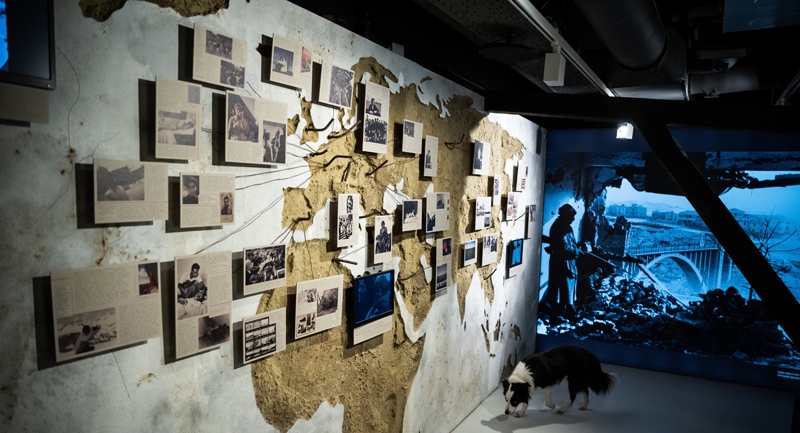
Best of Budapest & Hungary
Measure of Quality
Capa Center Opens Permanent Robert Capa Exhibition
‘Robert Capa – the Photojournalist’, the first permanent exhibition dedicated to the work of the world-famous photographer, who was born as Endre Friedmann in Budapest opened this Tuesday at the Robert Capa Center for Contemporary Photography in the Hungarian capital.
The Capa Center was established in 2013 in part to showcase the Robert Capa Collection, which was purchased by the Hungarian state in 2008, the director of the institution, Orsolya Kőrösi, recalled at the exhibition's press launch on Tuesday.
She noted that only three of the series selected by the renowned photographer's brother, Cornell Capa and his monographer Richard Whelan, covering Robert Capa's entire career, were produced, making Budapest the most important custodian of the Capa legacy, alongside New York City and Tokyo.
The construction of the exhibition space to display the Master Collection of 937 copies began in 2017, with the government contributing a total of HUF 813 million in 2017 and 2021 for the renovation and construction of the exhibition, she said.
The Capa exhibition is housed in the Art Nouveau cinema room (formerly the Tinódi Cinema and later the Budapest Chamber Theater), which was built in 1912.
Visitors are able to see 137 Robert Capa photographs (which will be replaced from time to time for art conservation reasons) and a further 400 projected images.
Gabriella Csizek, curator of the two-story exhibition, pointed out that "the image spaces will be complemented by information spaces that will present the photographer Endre Friedmann's life, his personality and contemporary photography through interactive surfaces, film recordings, radio interviews, projected images and documents.”
Robert Capa's photographs are presented in chronological order, according to the themes defined by his oeuvre.
This itinerary is not only a walk through time and space, but also a kind of inner journey that traces the artistic and personal fulfilment of Capa, who set out from Budapest in the early 1920s and then travelled and worked on almost every continent, before his life tragically came to an abrupt end.
Visitors to the exhibition will discover iconic Capa images from the Spanish Civil War (including the world-famous ‘Death of a Loyalist Militiaman’), the Japanese-Chinese War and the theaters of war in the Second World War, such as the Normandy landings.
Capa's camera reveals life in the newly liberated territories, in post-war Budapest, in a nascent Israel and in the Soviet Union as the Iron Curtain was about to fall. Alongside the images of destruction and reconstruction, the 'sunny side' also emerges, as Capa captured many of the figures of contemporary art life, but the final shots take us back to the war, to the battle-torn Indochina, where Capa sacrificed his life to produce his last photographic report.
The exhibition, covering some 500 square meters, is also to commemorate the 110th anniversary of Robert Capa's birth.




